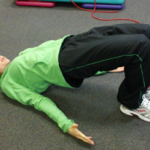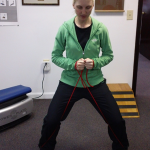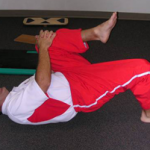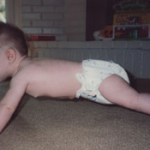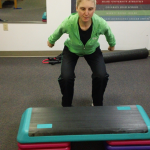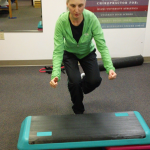Football
Times sure have changed! Baseball might be America’s favorite pastime, but football has taken over as America’s favorite sport. From the midget leagues to the pros, people just love their football.
With the increased passion for this great sport, the number of football injuries has also increased.
As with any sport, there are targeted exercises that help alleviate injuries. Here are a few to start on in the off season and keep up with as the season progresses.
How to improve lateral speed for football
You may be able to run up and down the field in flash, but how well do you move side-to-side? Your lateral speed is one of the most important factors when playing defense. There is a lot of acceleration and deceleration needed, so it is important to loosen up your hips and groin.
How to loosen up a tight ilio-band
Have you ever felt tightness along the outside of your thigh? That is your iliotibial band, a long tissue that attaches at your knee into a muscle called the tensor fascia latae (TFL) on your hip. When the TFL becomes overly stressed, it pulls on the iliotibial band. Many runners who complain of iliotibial tightness will continue to stretch the iliotibial band but fail to address the real problem – weak gluteal muscles. Try gliding your iliotibial band, TFL, quadriceps muscles and hamstrings over a foam roller to loosen them up.
Then work on strengthening your gluteal muscles with exercises like bridges and band X walks.
Preventing hamstring injuries
Last summer I worked with a college running back who was contemplating quitting football because of chronic hamstring injuries which started in high school and continued through his first years of college. This young man actually had well-developed hamstrings, was exceptionally strong, and had great hamstring flexibility. He had been working on hamstring strength and stretching religiously for the past 3 years. This is what he was told to do over and over and over again by his high school coach, college trainers and strength coach.
Muscle strengths are not always the result of that muscle being tight or weak. Many times the injured muscle is functioning just fine right up until the causative event. What we need to do first is look at the mechanism of injury.
During sprinting, the hamstring lengthens across the hip as it flexes and across the knee as it extends. Eccentric hamstring strength plays a role at this point, basically decelerating the lower leg at maximum length. What we find produce greater eccentric to hamstring tension at longer muscle length.
A second mechanism of injury comes as the athlete’s lead foot makes contact and must propel the athlete forward again. Track athletes are often taught to reach and pull with the lead leg to increase stride. This is not a good idea. The hamstrings are already at maximum length, then have to perform a maximum contraction to pull the sprinter’s body over the leg. It is a concentric contraction at this point but the hamstrings are passively inefficient, meaning, they are lengthened too much to generate the appropriate force.
A third mechanism has to do with the synergistic dominance. Synergistic dominance involves one muscle overpowering the others. Hip extension is supposed to be the job of the gluteals but what often happens is the hamstrings become a dominant muscle group. This is not what they are designed to do, thus they are badly over worked. So the athlete with the strong hamstrings and chronic strains can actually blame the weak gluteals.
A simple test to determine hamstring dominance over the gluteals: Have the athlete do a bridge and then extend one leg. Usually the athlete will experience a cramping sensation in the hamstrings, indicating over dominance of the hamstring and weak gluteals.
An exercise to help correct this problem: Have the athlete in a bridge position while holding one knee in a flexed position and perform single leg bridges with the down foot in a dorsiflexed position so as to exercise the gluteal muscle more than hamstring.
How do I improve hamstring flexibility?
This is a question I receive on a daily basis. Muscles often tighten up because your body is trying to create stability where it is lacking. For instance, you might think your hamstrings are tight, but the underlying issue could be an unstable core. So if you simply improve the flexibility of the tight muscle, you may actually be removing your body’s point of stability. As a result, your body can become more unstable, increasing your risk of injury. If you’ve been stretching your hamstring for years, and they are still tight, it is not a hamstring issue. Try these exercises instead.
- Lateral Squat
- X Walk
- Drop Lunges
ACL injury prevention
ACL injuries are becoming ridiculously common among athletes from the junior high/high school levels on through the professional levels of all sports. My personal thoughts on this issue are that they are a result of the poor training programs most of these kids go through.
The act of jumping and leaving the floor is not so much the problem. But what goes up, must come down, and it’s not always pretty when it does. Landing incorrectly, with the knees in an abnormal formation, is a major cause of ACL injuries.
Landing efficiently involves all the following: Landing on the balls of the feet; knees aligned with the mid to outer foot; hips are back absorbing force; slight forward lean of the trunk with the back flat. Basically it is a good squat position!
So when addressing ACL prevention, start with squat progression exercises and progress into landing progression exercises with single and double legs.
The importance of ankle mobility!
One of the issues we’re seeing, in both athletes and in our general population, is a lack of ankle mobility-more specifically dorsiflexion of the ankle. For just about everything in life, from sprinting, to squatting, we need a certain amount of dorsiflexion of the ankle. If we don’t have it, we have to compensate.
The most common things we see in patients with a lack of dorsiflexion is an “out toeing” as this opens up the ankle and allows for them to get to where they need to be, even if it is not the most biomechanically correct way to do so. This out-toeing may also be caused by a internal rotation deficit in the hip. An example of compensation due to lack of dorsiflexion is a baseball pitcher who pushes through the toe instead of the heel, creating a quad-dominant propulsion in a scenario that should have significant contribution from the posterior chain musculature.
A lack of ankle mobility may also negatively affect knee function. Lack of motion can increase rotational torque at the knee. If you lock up a joint that should be mobile, the body will look elsewhere to create that range of motion.
Alleviating ailing ankles!
Sports are extremely stressful to the body and the ankle joint is no exception.
Over the course of an athletic practice or competition, each foot contacts the ground hundreds, or even thousands, of times and goes into plantar flexion for propulsion just as many times. This repetitive strain can shorten the plantar flexors, and over time, this jarring of the joint causes natural gliding to become restricted. Add to this mix, the ankle is the most commonly injured joint in sports. The loss of dorsiflexion creates an inability to actively dissipate force in the lower extremity and can lead to problems both in the ankle and up the leg, as the force must go somewhere.
Furthermore, lower ankle dorsiflexion can lead to a bouncy appearance in the gait because the body’s weight is transferred to the forefoot too soon, leading to inefficient locomotion. As the issue can be caused by joint-mobility restrictions, muscular tightness, or a combination of both, achieving proper dorsiflexion should be addressed with a multifaceted corrective approach, including tissue lengthening, joint mobility, and lifestyle modifications. Muscular tightness should be addressed first with techniques of foam roller and stick work for muscular lengthening.
The ankle and foot is an extremely complex system that makes effective locomotion possible. There are practical strategies that can help optimize this performance in sports and in life.
Ankle mobility and dorsiflexion can be achieved with the following exercise of ankle mobility with tibial glide as shown below.
Jumping Exercises
- Box Jump
- Single Leg Box Jump

